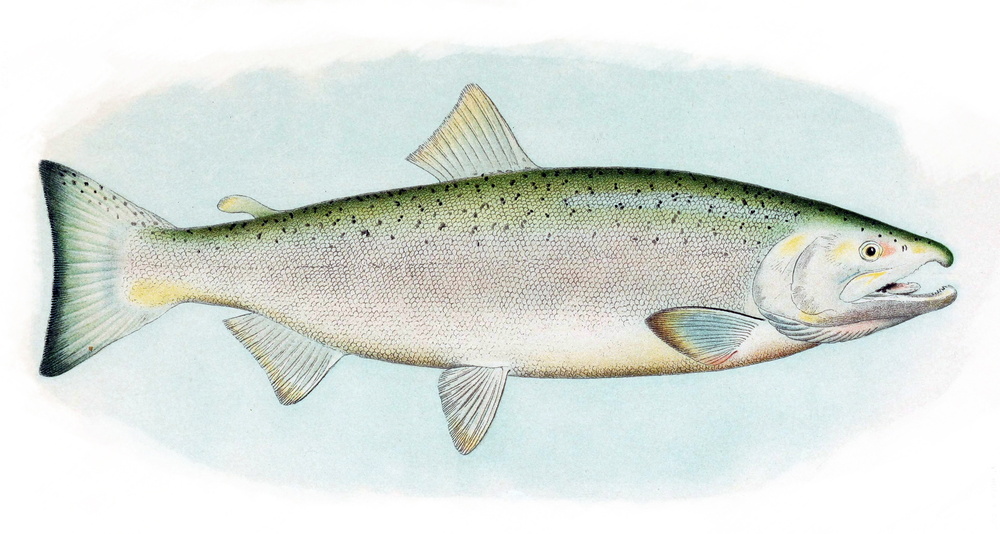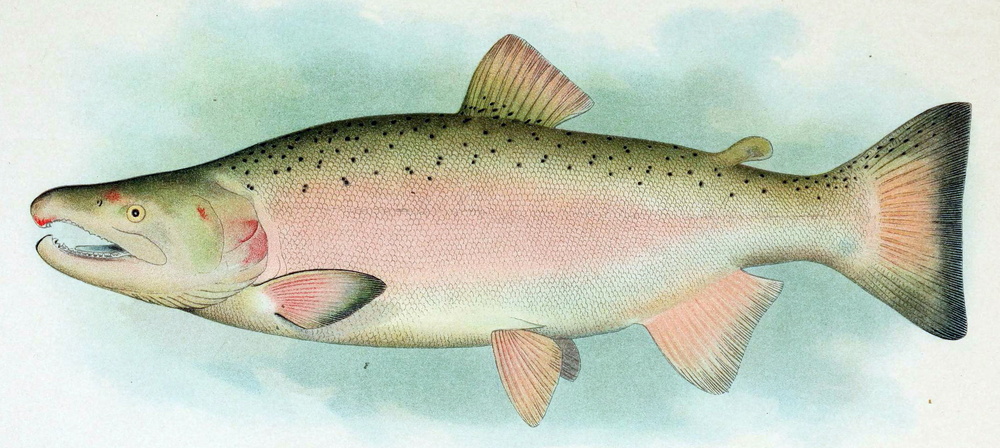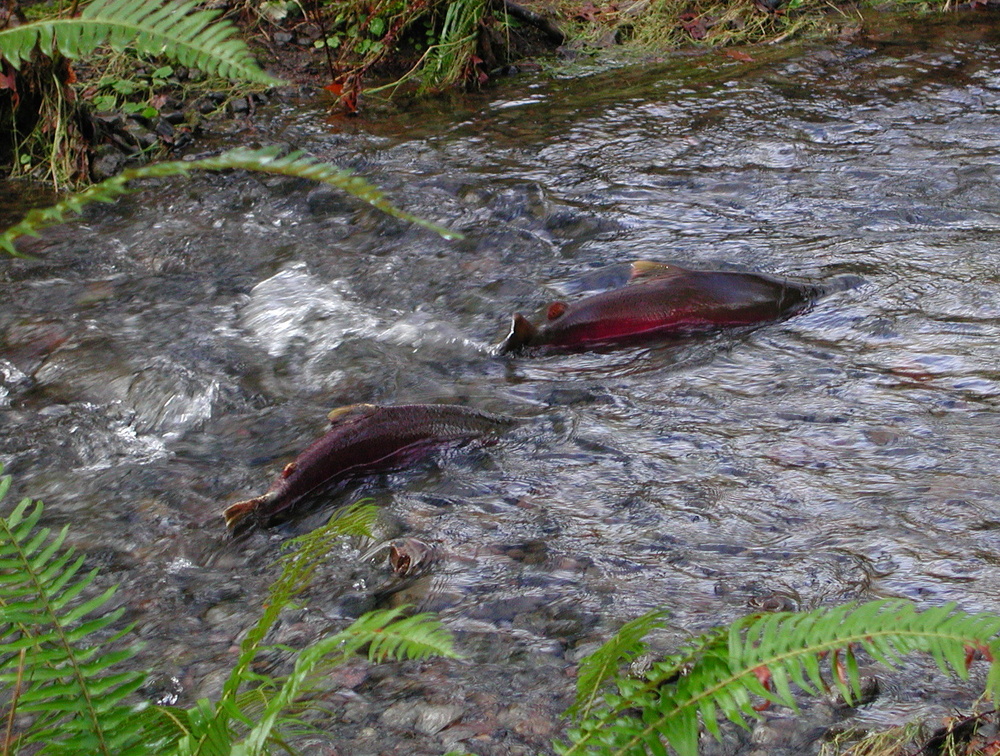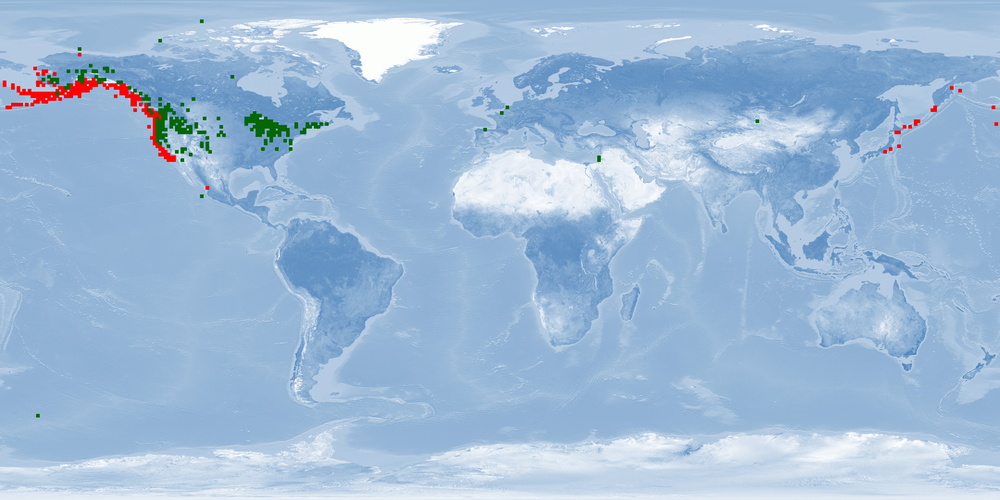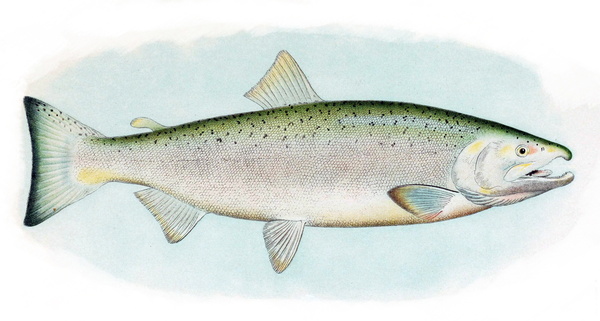

Farming remarks
Oncorhynchus kisutch is a Pacific salmon species distributed in the North Pacific basins from northern Japan through Kamchatka, across the Bering Sea to Alaska, and south through all coastal areas to California. O. kisutch has been introduced into many areas of North America, Asia, Europe, and South America. There are two strains, an anadromous one that migrates and a resident one that stays in freshwater lakes. Within the migratory strain, two morphotypes have been described, an "ocean/coastal" type with small median fins and more streamlined body that lives offshore and an "inshore/interior" type with large median fins and a robust body that remains within inside waters. In anadromous O. kisutch: eggs hatch in streams, juveniles (parr) live in streams for one year and metamorphose into smolts that will migrate to the ocean. In the ocean, smolts grow into adults and might migrate up north. When they are close to maturity, they migrate back to their original streams to spawn. Females create several nests in a defended area called redd. O. kisutch dies after reproduction. In some farms, only females are raised, which are less aggressive. Some farms have an accelerated cycle for maximising growth and reducing the hatchery cycle by 9 months: they rear them in fresh water until parr/smolt, then place them in salt water (during peak of PHOTOPERIOD - July) until harvest, which occurs at around 19 months of age at 2.5-3.5 kg. Because of their need to migrate as adults, it is unlikely that current farms can provide this welfare need. Further research needs to be done to accommodate this need into farming conditions and on living offshore (home range, aggression, substrate). Currently, the main producer is Chile, with some smaller production in Japan, Canada and the USA. O. kisutch will be affected by climate change.
For details see: WelfareCheck | farm






